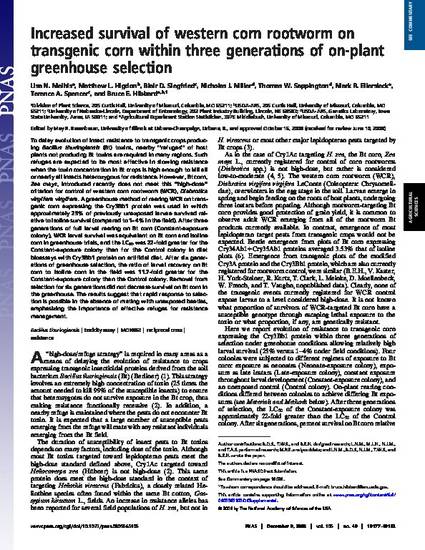
To delay evolution of insect resistance to transgenic crops producing Bacillus thuringiensis (Bt) toxins, nearby “refuges” of host plants not producing Bt toxins are required in many regions. Such refuges are expected to be most effective in slowing resistance when the toxin concentration in Bt crops is high enough to kill all or nearly all insects heterozygous for resistance. However, Bt corn, Zea mays, introduced recently does not meet this “high-dose” criterion for control of western corn rootworm (WCR), Diabrotica virgifera virgifera. A greenhouse method of rearing WCR on transgenic corn expressing the Cry3Bb1 protein was used in which approximately 25% of previously unexposed larvae survived relative to isoline survival (compared to 1–4% in the field). After three generations of full larval rearing on Bt corn (Constant-exposure colony), WCR larval survival was equivalent on Bt corn and isoline corn in greenhouse trials, and the LC50 was 22-fold greater for the Constant-exposure colony than for the Control colony in diet bioassays with Cry3Bb1 protein on artificial diet. After six generations of greenhouse selection, the ratio of larval recovery on Bt corn to isoline corn in the field was 11.7-fold greater for the Constant-exposure colony than the Control colony. Removal from selection for six generations did not decrease survival on Bt corn in the greenhouse. The results suggest that rapid response to selection is possible in the absence of mating with unexposed beetles, emphasizing the importance of effective refuges for resistance management.
Available at: http://works.bepress.com/thomas_sappington/59/

This article is from Proceedings of the National Academy of Sciences of the United States of America 105 (2008): 19177, doi:10.1073/pnas.0805565105.